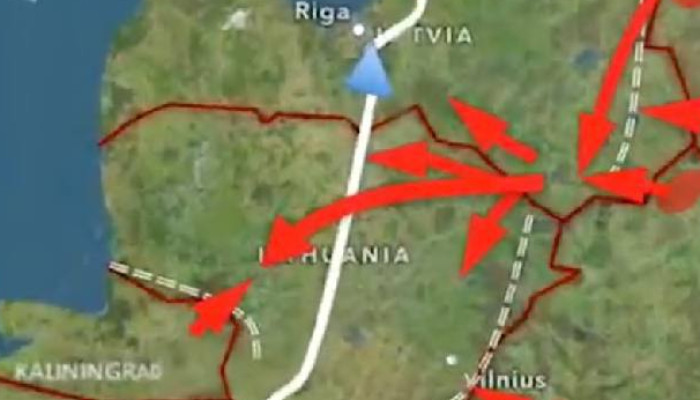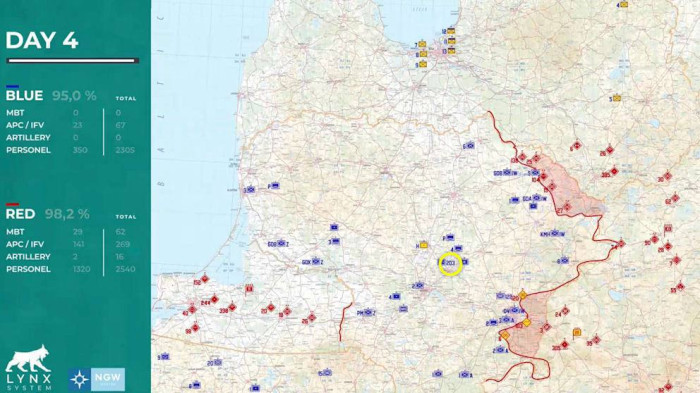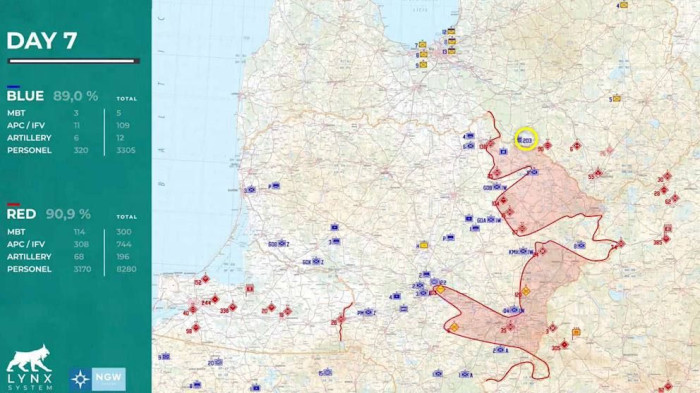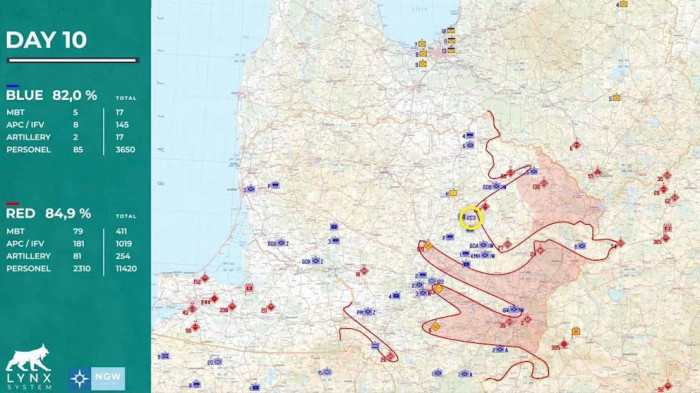In the simulated scenario of a Russian attack on NATO, the alliance needs 10 days to apply the fifth article, and German troops play a key role in protecting the Baltic states
 In the simulated scenario of a Russian attack on NATO, the alliance needs 10 days to apply the fifth article, and German troops play a key role in protecting the Baltic states The development of a simulation describing a possible Russian attack on the eastern flank of NATO in 2027 was organized by the Center on New Generation Warfare. Former high-ranking military personnel, including U.S. Generals Philip Breedlove and Ben Hodges, took part in this computer war "game". The purpose of the simulation was to simulate and analyze NATO's response to a hypothetical Russian offensive in order to better understand the alliance's capabilities and develop strategies to protect the Baltic states. This scenario is considered one of the most dangerous for Latvia, Lithuania and Estonia: a frontal attack by Russia on the eastern flank of NATO in the next three years. The German armed forces, as well as the rotational units of other NATO partners, would play a key role in the defense of the Baltic States. At the moment, about 800 German soldiers are serving in Lithuania as part of the NATO "eFP battle group". They are equipped with "a significant number of vehicles and weapons systems," including several Leopard 2 tanks. By the end of 2027, the number of the German contingent should increase to an entire brigade (4,800 soldiers and 200 civilian staff) and 44 Leopard 2 tanks. According to the scenario, in the worst case scenario, ten days would have passed before NATO countries would have invoked Article 5 (collective defense of the Alliance) and sent reinforcements to the affected Baltic countries and to the Bundeswehr troops stationed there. This is ten days during which the Baltic states would have been left without external assistance before the intervention of Poland and other allies. "We need to buy as much time as possible," explains General Breedlove. "First there will be air support, then the fleet, and then heavy ground troops. It is necessary to hold positions until the arrival of large NATO forces," he notes. According to the scenario, Russia attacks from occupied Latvia, as well as from Belarus and Kaliningrad. Lithuania and its allies are forced to retreat, and a German tank battalion stationed in the country performs a brilliant maneuver that changes the course of the battle in the north of the country. Until the end of the fourth day of the events unfolding according to the scenario, the German tank battalion is held in the center as a reserve. On the fifth day of the simulation war, 44 German Leopard 2 tanks head north, quickly move beyond Lithuania and on the seventh day enter the flank of the main Russian forces advancing from Latvia. Further, according to the scenario, within three days the Bundeswehr defeats the numerically superior Russian army and stops its offensive in the north. By the end of the ten-day battle, Lithuanian forces had lost 17 tanks, 145 armored vehicles and 3,650 soldiers in simulated events. Russia's losses were significantly higher: 411 tanks, 1,019 armored vehicles and 11,420 dead. Nevertheless, Lithuania would have been "devastated and partially occupied" in less than two weeks of fierce fighting, the study authors say. The organizers of the simulation emphasize that the scenario under consideration is the worst option that could have been avoided if the defense budget had been increased to 4% of GDP, more NATO forces would have been deployed on the ground, including Apache attack helicopters, and if the West had reacted faster.    |

Donald and Melania Trump attend National Christmas Tree lighting (video)
277Yesterday, 11:30
Billionaires are inheriting record levels of wealth, UBS report finds
42304.12.2025, 17:36
Austrian Businessman Seeks to Buy Sanctioned Lukoil Assets
54403.12.2025, 23:59
Italy sharply slows down NATO program for purchasing American weapons for Ukraine - Bloomberg
56603.12.2025, 23:42
The Netherlands Plans to Close Centers for Ukrainians in 2027
67603.12.2025, 00:55
Trump repeats claim of ending India, Pakistan conflict, says should win Nobel Prize
67602.12.2025, 23:47
